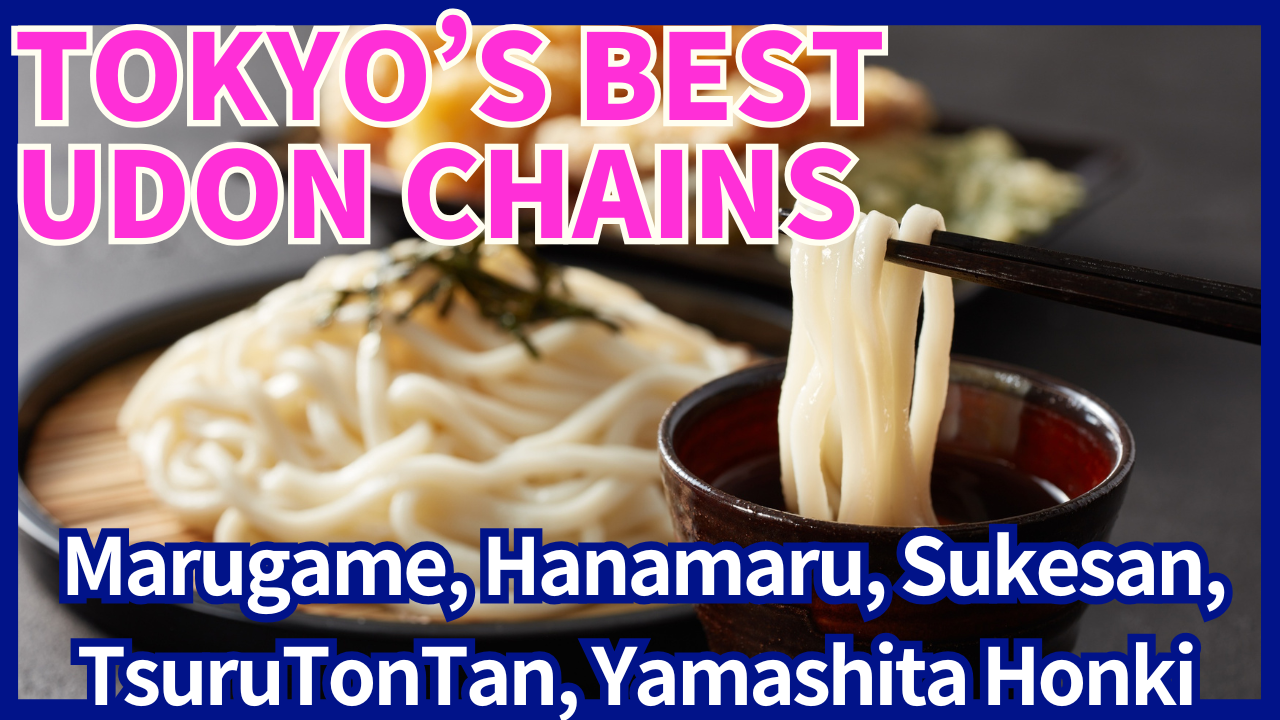- Opening: Tokyo’s Food Scene and the Appeal of Udon
- Japan’s Noodles: Ramen, Soba, and Udon
- Marugame Seimen – Freshly Boiled Sanuki Udon, Self-Serve Style
- Hanamaru Udon – Affordable and Friendly Sanuki from Kagawa
- Sukesan Udon – A Taste of Northern Kyushu in Tokyo
- TsuruTonTan – Creative Udon in a Stylish Setting
- Yamashita Honki Udon – Handcrafted Flavors and Modern Vibe
- Conclusion: Enjoy Tokyo’s Udon Culture
Opening: Tokyo’s Food Scene and the Appeal of Udon

Welcome to Tokyo, everyone! This city might be world-famous for ramen and sushi, but don’t overlook udon—a thick, springy noodle beloved by locals across Japan.
Historically, Tokyo was known for soba rather than udon, but today you can easily find top-quality udon styles from all over the country right here in the capital.
In this video, I’ll introduce five casual, visitor-friendly udon chains that will help you enjoy a comforting bowl without breaking the bank. Let’s get started!
Japan’s Noodles: Ramen, Soba, and Udon

When traveling in Japan, you’ll likely come across three major noodle types—ramen, soba, and udon—each with its own unique taste and cultural significance.
Ramen is made from wheat flour and served in a deeply flavored broth, often topped with pork slices, bamboo shoots, and soft-boiled eggs. The flavors can range from soy sauce or miso to rich pork-bone tonkotsu, making it a hearty, satisfying meal.
Soba, on the other hand, features buckwheat flour (sometimes blended with wheat) for a slightly nutty, earthy taste. It can be enjoyed hot or cold, often with a dipping sauce or a light broth, and is closely tied to old Edo (Tokyo) tradition.
Then there’s udon, made of wheat flour and characterized by its thick, chewy texture. Regional variations include firm Sanuki-style from Kagawa Prefecture and softer Fukuoka-style, with different broths and toppings that let you appreciate how versatile udon can be. Understanding these distinctions will help you pick the perfect noodle dish wherever you wander in Japan.
Marugame Seimen – Freshly Boiled Sanuki Udon, Self-Serve Style
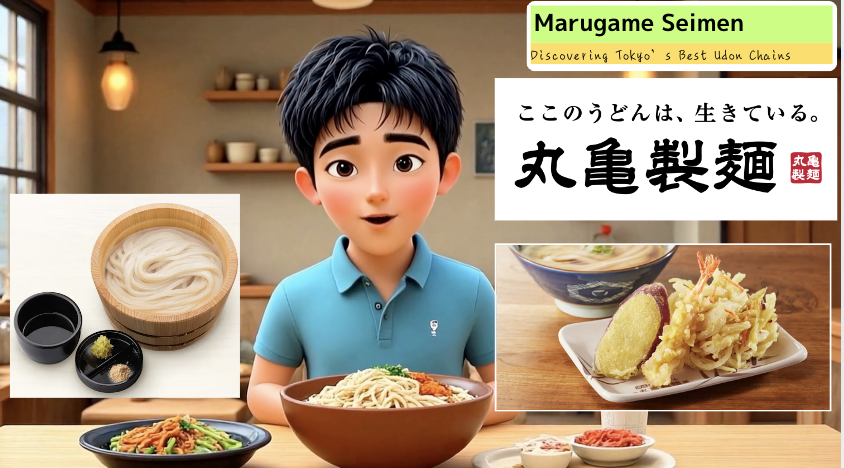
One of Japan’s largest udon chains, Marugame Seimen has around 840 domestic locations (as of 2024) and is known for popularizing Sanuki udon from Kagawa Prefecture. Each shop makes noodles in-house, so you can watch the dough being rolled and cut for an extra-fresh texture.
The self-service system is straightforward: pick your bowl (hot or cold, regular or large) at the counter, then grab any tempura or rice balls. After you pay, help yourself to free condiments such as green onions and ginger.
The staff are used to visitors—many branches have English menus or easy-to-read photo boards. Prices start around 300 yen for a basic bowl, making it an ideal option when you need a quick, budget-friendly meal. With branches in Shinjuku, Shibuya, and other major areas, Marugame Seimen is incredibly convenient for travelers on the go.
Hanamaru Udon – Affordable and Friendly Sanuki from Kagawa
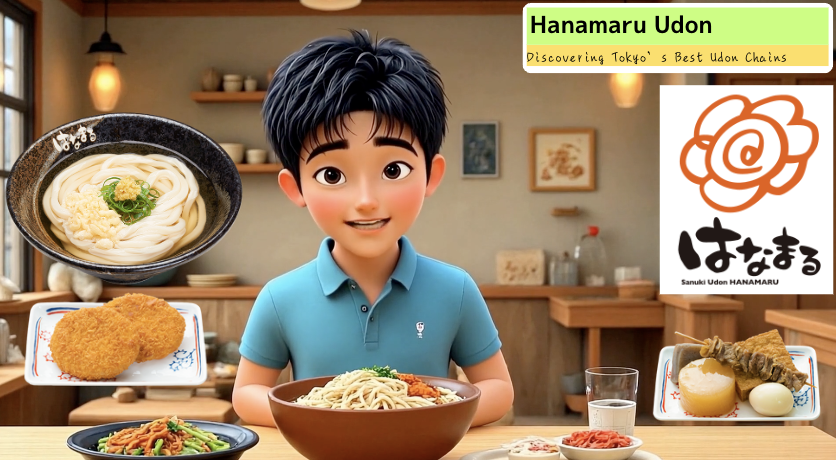
Another Sanuki-style favorite is Hanamaru Udon, founded in 2000 in Kagawa. Like Marugame Seimen, Hanamaru adopts a self-service approach, but it’s often praised for its especially budget-friendly pricing.
A simple kake udon can cost as little as 300 yen, letting you add extras like tempura or oden without breaking the bank. Some locations offer a ticket machine, while others have staff to take your order—either way, large picture menus simplify the experience for non-Japanese speakers.
Beyond their classic broth-based bowls, you’ll find refreshing cold noodles (zaru) or bukkake udon with a poached egg, all well-loved for their chewy bite and clean flavor. If you’re exploring Tokyo’s central districts and crave a quick meal with local flair, Hanamaru Udon is a great bet.
Sukesan Udon – A Taste of Northern Kyushu in Tokyo
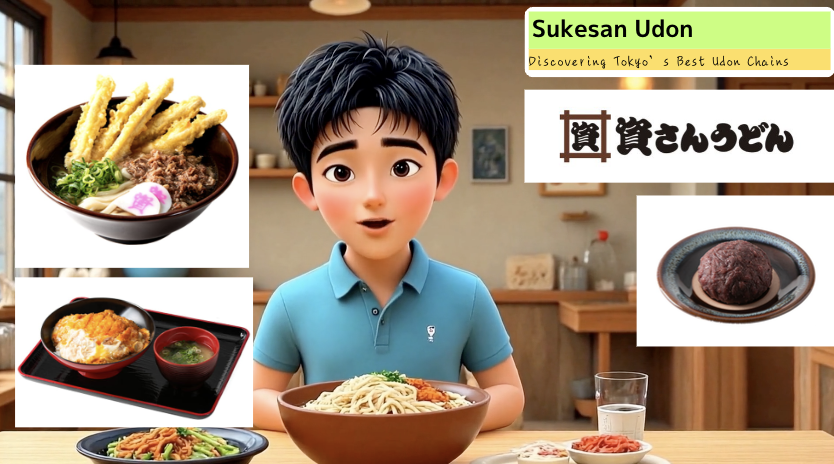
Originally a local staple in Kitakyushu, Sukesan Udon made waves when it opened its first Tokyo branch in Ryogoku in early 2025.
Unlike the firm texture of Sanuki udon, Kyushu-style noodles are softer and pair well with a light, comforting broth. Sukesan’s signature bowl, “niku goboten udon,” features sweet-savory beef strips and crispy burdock tempura—an addictive combination.
They also serve yaki udon (stir-fried noodles) and a variety of donburi rice bowls, plus sweet “bota mochi” rice cakes. At the Ryogoku location, you buy a meal ticket from a touchscreen, then take it to your seat.
Condiments like shredded kelp and spicy mustard greens are available to tweak the flavor. It’s open from early morning to late at night, so whether you visit the nearby sumo stadium or just happen to be in the area, Sukesan Udon offers a gentle, home-style taste of Fukuoka in the heart of Tokyo.
TsuruTonTan – Creative Udon in a Stylish Setting

For an upscale noodle experience, TsuruTonTan is your best bet. Originating in Osaka, it’s now spread across Tokyo, from Roppongi to Shibuya, even overseas.
The star attraction is the giant serving bowl, which can be nearly 30 centimeters in diameter, making each dish as visually stunning as it is filling. While you’ll find classic Kansai-style udon, TsuruTonTan also serves creative flavors like mentaiko cream, black sesame dan dan, and big kitsune (with a giant slab of fried tofu).
Each branch has a unique design aesthetic—some are modern and sleek, others a bit more playful—and the friendly staff will provide English menus upon request. Prices hover around 1,000–1,500 yen per dish, a bit higher than other chains, but the generous portions and refined atmosphere make it worth the splurge.
Yamashita Honki Udon – Handcrafted Flavors and Modern Vibe
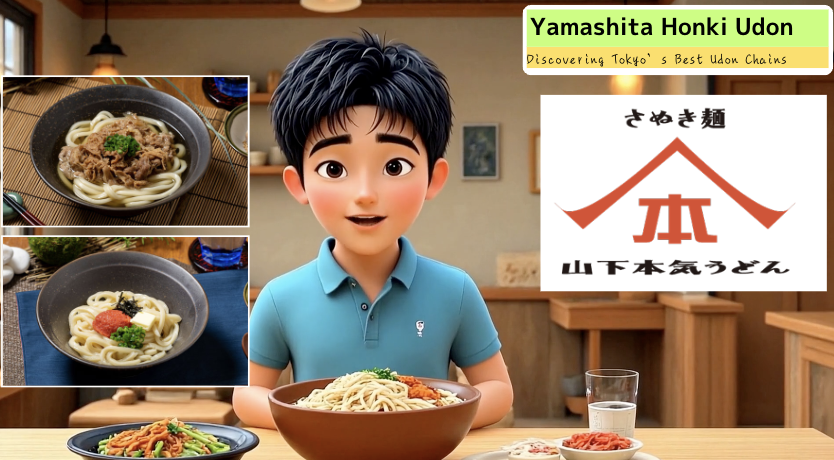
Smaller in scale but brimming with passion, Yamashita Honki Udon offers hand-kneaded Sanuki-style noodles in a cozy, modern setting. Founded by a dedicated udon lover, this chain focuses on delivering a “serious” (honki) bowl, complete with freshly boiled noodles and a rich soy-dashi broth.
Popular options include beef udon with sweet-salty sliced beef or a creamy mentaiko udon for those craving a richer taste. Many locations, found in districts like Shibuya and Shinjuku, offer table service, though some branches do use ticket machines.
You’ll often find English-friendly menus with photos, making it simple to order. Prices generally range from 600 to around 1,000 yen. If you want a local-feeling udon fix without straying from major tourist hubs, Yamashita Honki Udon fits the bill perfectly.
Conclusion: Enjoy Tokyo’s Udon Culture
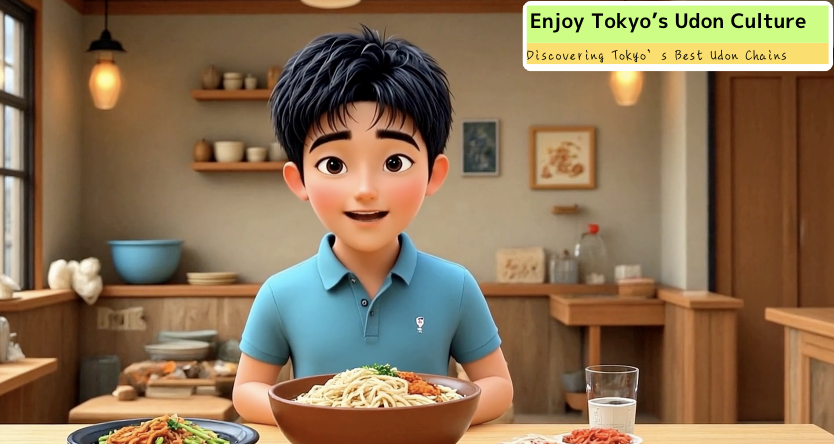
These five udon chains showcase the incredible variety found in Japan’s noodle scene—everything from budget-friendly Sanuki bowls to creative fusion styles. They’re all easy to navigate for visitors, typically feature English menus or pictures, and won’t strain your wallet.
As you explore Tokyo, be sure to drop by at least one of these shops and savor a bowl of hot (or cold!) udon. It’s a delicious way to experience the city’s culinary diversity. Thanks for tuning in, and enjoy your udon adventures in Tokyo!
